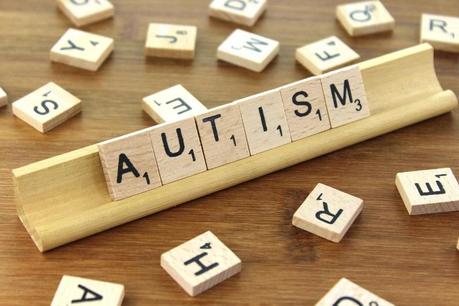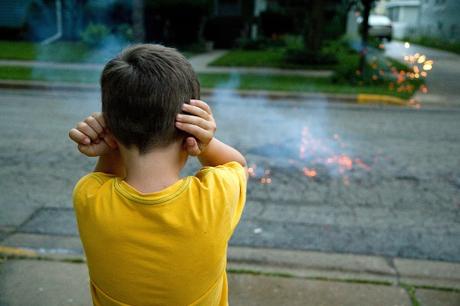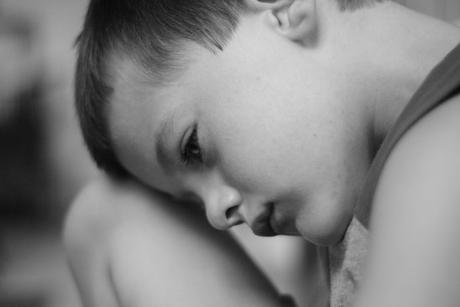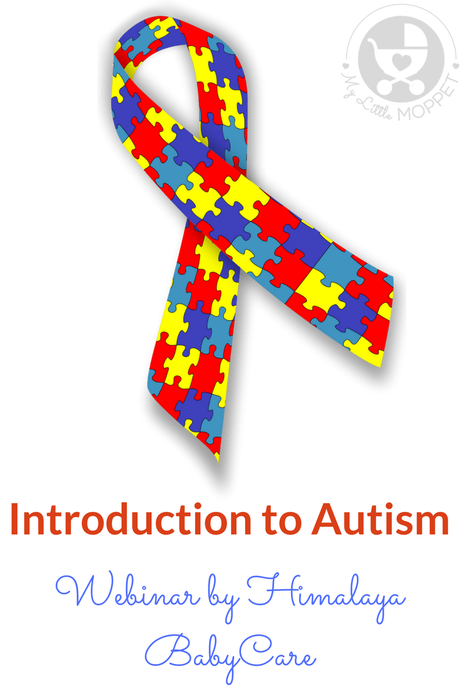April 7, 2017 Leave a Comment
+1 Tweet Share Pin WhatsAppShares 0For most Moms in India, autism is still a rather mysterious term. We know that it’s something that affects daily life, but we’re not sure about how it originates or how to deal with it. This lack of information itself gives autism a frightening tinge, which only leads to more ignorance on the topic.
It was to battle such misconceptions and spread more awareness that Himalaya BabyCare organized a webinar on autism for Mommy bloggers like yours truly. The webinar was hosted by Mrs. Anupama, Child Behavior Specialist associated with Himalaya BabyCare. The webinar was perfectly tailored to the Indian audience and was very informative and enlightening. Here are a few highlights of the webinar.

What is Autism?
Autism, or Autism Spectrum Disorder, is a medical disorder related to communication and social skills. Autism can range from mild to severe, covering a wide range of symptoms in between. Unlike what many people believe, autism is not a learning disorder, with the symptoms mostly affecting the ability to form relationships as well as language skills. Autism is also associated with repetitive behavior of any kind. From the autistic child’s perspective, it seems like there is constant ‘chatter’ going on in his brain.

It is difficult to pin the cause of autism on any one factor, and there is usually a combination of genetic and environmental factors. A pregnant mother’s exposure to infectious diseases or toxic substances can increase the probability of having an autistic child. A child who is autistic is highly likely to have a sibling who is also autistic.
According to Mrs. Anupama, autism is seen more commonly today, with 1 in 60 children being autistic. Among Indian children, 1-3% of autistic children are diagnosed between the ages of two and nine. Globally, autism becomes obvious after age two, but some children are even diagnosed at 18 months. This makes it important to know the early signs of autism in children.
Early Signs of Autism
For most children who are later with diagnosed with autism, milestones are usually achieved at the right time – up to a certain point. Children may start showing regression after developing normally for a while, which is when parents begin to get concerned. Here are some more early signs to watch out for:
- No smiles, eye contact or change in facial expressions on seeing familiar people at 6 months
- No sounds or babbling by 12 months
- Lack of any communicative gestures like reaching out, waving etc. by 12 months
- Not responding to name by 12 months
- Delayed speech and/or language development – no proper words by 18 months
- Extreme reactions to bright lights, loud sounds, strong smells or any change in environment
- Displays repetition in any form – rocking to and fro when upset, stacking cubes continuously, banging head on floor/wall, picking up a toy, putting it back and picking it up again
Living with Autism

As can be expected, parents of autistic children have multiple challenges to deal with. They have the usual problems of dealing with temperamental toddlers along with managing the specific challenges of autism. This is where an early diagnosis becomes significant.
A child’s brain development occurs the most rapidly during the first three years of his or her life, and this is the perfect time to help ‘rewire’ some parts of it. This is why it’s important to watch out for those early signs of autism. By diagnosing it early and with the right doctor, many of the symptoms can be reversed. There are many therapies which can help. These include Early Intervention and Behavioral Therapy, comprising of Cognitive Behavior Therapy (CBT) and Autism and Applied Behavioral Analysis (ABA). Infant Brain Stimulation and BMSI programs have also shown tremendous success in dealing with the daily challenges of living with autism.
Autism Q&A
We also had a Q & A session where we had a chance to clear any lingering doubts about the subject. I had two questions which were graciously answered by Mrs. Anupama.
Dr. Hema: There is so much information about autism on the internet that can be very confusing to parents. Can you recommend any trusted website or book to follow?
Mrs. Anupama: Take the advice of a professional – it’s more reliable than following a website or a book.
Dr. Hema: Some signs of Autism are similar to those toddlers exhibit during tantrums – how can one differentiate between them?
Mrs. Anupama: If you suspect your child might have autism, it’s best to seek a professional’s help who will be better able to identify if it is indeed autism or just toddler tantrums.
In a nutshell, the most critical factors in dealing with autism in children are threefold – identifying the signs early, finding the right professional and starting therapy right away. A diagnosis of autism needn’t sound like the end of the world. With modern therapies and imaging technologies, an autistic child can live a perfectly happy, fulfilling and successful life.

Want to see videos of our recipes ?
VISIT OUR YOUTUBE CHANNEL +1 Tweet Share Pin WhatsAppShares 0
Filed Under: Health Tagged With: autism, health, himalaya, learning, parenting
